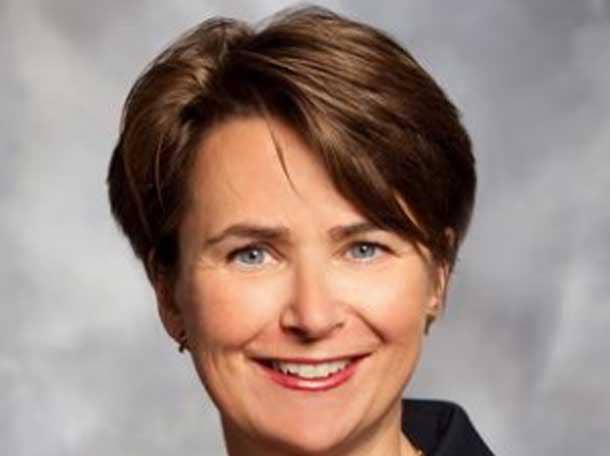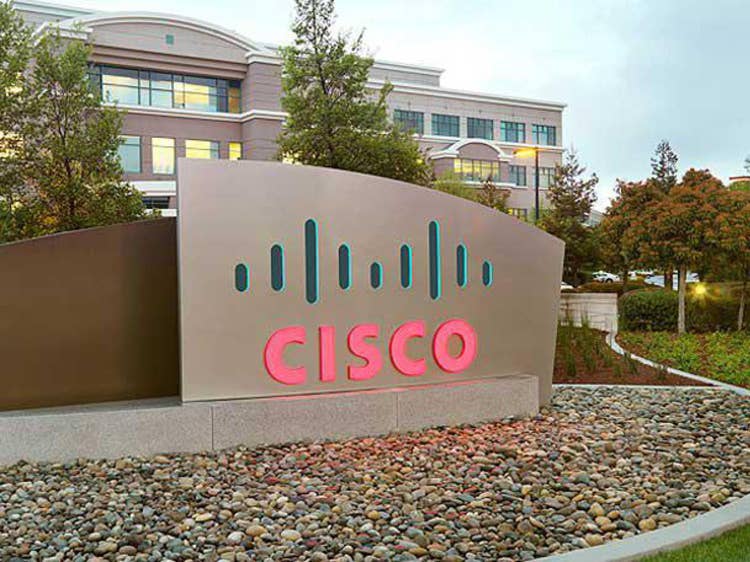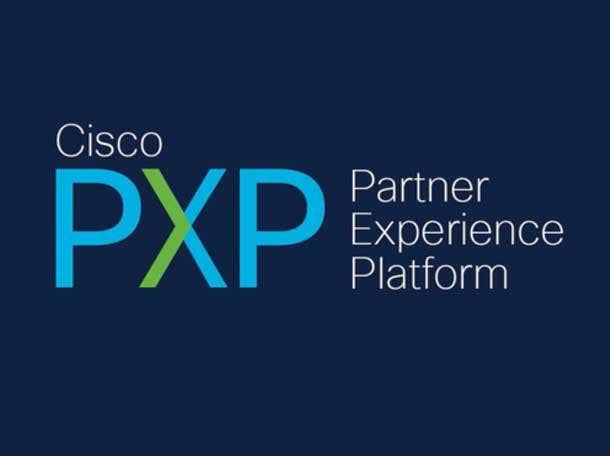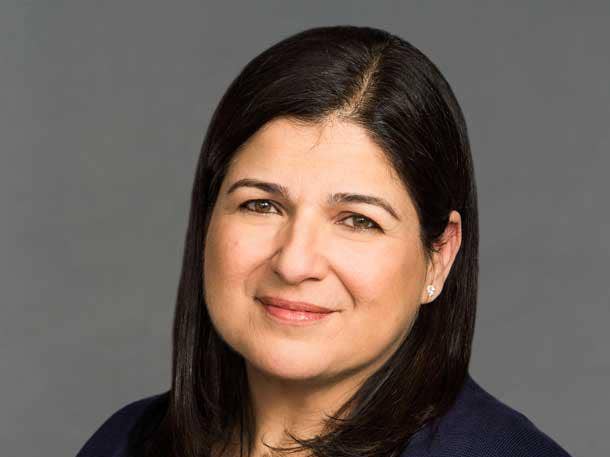Tech Veteran José van Dijk Looks Back On 25 Years At Cisco
As she celebrates her 25th anniversary at Cisco, José van Dijk — who made CRN’s Power 100 Most Powerful Women of the Channel 2022 — looks back on her journey with the company, the importance of a good workplace culture, the current supply chain crisis, and advice for women in the channel.

The Silver Anniversary
Cisco veteran José Van Dijk is ringing in 25 years with the San Jose, California-based tech giant this month.
Van Dijk, one of CRN’s Power 100 Most Powerful Women Of The Channel 2022, started her career as a supply chain coordinator for Texas Instruments. She then moved on to manage customer service for Apple before landing at Cisco where she’s spent the last quarter of a century, holding numerous leadership positions across the globe. Most recently, she served as vice president of operations and partner performance within Cisco’s Global Partner Organization. Before that, she was chief of staff and leader of the transformation office for Cisco’s Customer Experience organization, where she was responsible for alignment of the organization’s strategic initiatives, innovation leadership, and growth. She also established Cisco’s first decentralized Customer Service organizations in Asia-Pacific and Japan.
As of August, she’s taken on a new title: vice president, partner performance and experiences organization. Now, Van Dijk is responsible for managing and improving experiences and the daily business of Cisco partners. She and her team manage partner performance and in the last three years have been busy digitizing processes and tools for solution providers in Cisco’s Global Partner organization, while aligning with Cisco’s field organization.
Suffice it to say, Van Dijk has learned a lot along the way about technology buying behaviors, customer experience, the tight bond that vendors should build with solution providers, and perhaps most importantly, the importance of a strong company culture that cares about its employees inside and outside the workplace.
Van Dijk sat down with CRN to talk about her impressive career and to share advice from the lessons she picked up along the way. What follows are excerpts from the conversation.

What brought you to Cisco and what did the start of your tenure with the company teach you about taking risks?
I was head of customer service [for Apple] and one of my colleagues from there went to Cisco. He asked me to come as well. I spoke to my husband -- he was working for Sprint at the time -- and he said: “You have to go – it’s Cisco! You know, routers and switches!” I had been working with monitors, so I was [thinking] “I have no idea what you’re talking about, but OK! Let’s go.” I did my interview on July 24th -- year-end week [for Cisco] -- and thought: “Oh my god. What is this?” People were running around, faxes everywhere, and they were very like, “What do you want to do here? Okay, come back next week.” So, first of August, there I was.
I think we had 10 people in customer service and my role was setting up the European entities. But because it was so small in 1997, we didn’t have a local [enterprise resource planning] ERP system, we didn’t know how to pay our sales guy -- we didn’t know anything. It was in the startup phase. Even if you’re in the learning process and you don’t know something, just ask. This is this is very funny -- [Cisco] asked me to do to set up the commerce relations. I [thought]: “I can do that -- chambers of commerce.” They were talking about e- commerce. But again, you dive in and within a year, we had 97 percent of our orders coming in through e-commerce. The opportunity is there if you dare to ask the right questions and get the right team around you. You can learn anything.

What’s made you stay for 25 years?
I was almost the only woman in the office and the first one in the Amsterdam office pregnant, so there were no people that you could check with. I had a conversation with our senior vice president at the time when there was a job open for a director and he said: “You didn’t apply for this job. Why is that?” I gave a stupid answer. “Well, I don’t know. This is my first baby. I don’t know what it’s going to be like working 80-90 hours a week or what it will be like when I’m back [from maternity leave]. He gave a worse answer: “I think you’re right. I think you should go be at home with your baby.” I was so mad! It was so interesting. The next day, he called me in his office again and said: “I need to apologize to you, there was a personal story behind [my answer]” and that he never should have reflected his personal life on [me]. I said: “Well, you gave me the kick that I needed, because I want that job.” He said: “OK, I don’t have this job for you, but guess what? You’re moving to Asia!” There was [an opportunity] setting up everything we’d set up [in Amsterdam] in Asia. My husband had joined Cisco by then and became a manager in Asia. So, I came back in February from maternity leave and the first of April, we were in Singapore.
[People ask] “Why are you still with this company after so many years?” The culture within Cisco is so strong it’s just unbelievable. In 2003, I was almost six months pregnant, and my water broke which was way too early. I was just halfway through my pregnancy. The president for emerging markets and the president of European markets sent people to our house to take my computer away [so I couldn’t work]. My daughter and I survived but it was really critical for a number of months. My husband was still working for Cisco and we had a three year old at home as well. Cisco took care of everything. When [my husband] couldn’t work, his commissions were paid out as normal and I didn’t work for a year. People might have thought I was living in a flower shop. Cisco was sending flowers every week. The Japan team was sending crane birds because they bring good luck. People talk about Cisco blood running through your veins and I guess that’s what I have. If you see how the Cisco family [jumps] into action when something like a crisis like that happens, it’s unbelievable. And I think that’s what makes the company still so strong still today.

After being involved in many different areas of the business, what are you the most passionate about and what drives you the most?
I think what drives me is when something is completely new and proving to people that it can be done. For example, when I fell into the role dealing with legal entities, one legal entity would take three to five years, and it would cost anywhere between $50 and $70 million. We found a way to set up 25 legal entities for $18 million in nine months. It’s that kind of stuff. When we’re talking about [Partner Experience Platform] PXP -- How was it possible that we were dealing with 180 tools for our partners? That’s pretty crazy. So, I promised Oliver [Tuszik, Cisco’s channel chief] that I would kill at least 50 percent of those tools within a year. It took maybe a little bit longer, but we did it. And so, it’s about making the impossible possible. With Cisco, there’s always something new coming. There’s always something to say: “Let’s fix this.”

When was your first exposure to the channel and what have you learned from working with partners?
When I started in customer service, we got our orders through the partners, so that was my first exposure with partners. And especially when we [started] doing ecommerce, you’d have to work with them on how you design these tools and the systems and everything like that. But then I stepped away from [the channel] for a while, being more in IT and [operations] and back-office thing [where] what I did was way more business development.
But for Cisco, 90 percent of our business is going through to channel, so there’s always an element of channels no matter what you do. They are so incredibly important for us because we cannot survive with our partners. Even when I was in engineering and the service provider [space], even though we have a lot of big service providers, same thing again -- you have to work with the partners. So, then the [Partner Performance] opportunity came, and this is the real hardcore stuff for partners. Especially now with the announcement [earlier this month] that’s my role is changing a little bit from performance and operations, to experience as well and how do we drive experience for partners to the next level? That’s really at the heart and soul of what we do.

Since you got your start in supply chain, what’s your take on how these constraints are changing the way companies are doing business today?
It has been a really, really difficult period. Partners have been suffering under these supply chain constraints. Long lead times are not good for anyone. We can’t bill, they can’t bill. What I’m amazed at was what Cisco’s engineering teams have been doing [and] how quickly they [have been] developing new chips so that our shipments are coming through right now.
Never waste a good crisis -- I think that’s what we did as well with the supply chain. We’ve been recognized forever as the best supply chain in the world. I think it shows now what we have done [by] putting the supply chain and engineering together because [engineers] get a lot of feedback from the supply chain on what can be done better. If you have engineers that can listen and can move fast, then you can see the miracles that can happen with products that are suddenly [shipping] again. Sure, it can be tough, but I’m glad we’re seeing a light at the end of the tunnel.

Maria Martinez
What’s your advice for women beginning their careers in the channel?
That’s a question that I get a lot actually. What I normally say is, a lot of women are holding back. If a job comes along, most women are going to [think] “Can I do this? Or this? Or This? I’m missing this.” Where a guy will just think “OK, let’s go!” I think that women can take way more risk. Women are flexible, we have creativity, and we should use these capabilities way more. I think the other thing is; never be afraid to ask for what you want to and to say what you want. Say what’s on your mind, say what you want for your career. Because opportunities don’t come flying into your face -- you’ve got to do something. For a lot of people, men and women, actually, they’re waiting for the opportunities to come. They wait for somebody to create a personal development plan for them or wait for somebody to help them think [about] what the next two years are going to look like. And that’s not going to happen. You got to do it yourself. The other super important thing that always has helped me in my entire career is the network of people around you. Who are the ones that will give you feedback and that are honest with you, that push you, but also help you to see new opportunities.
Jumping around [like] I did around from supply chain and engineering to Maria [Martinez’s customer experience] organization -- it’s not easy. It’s so much easier to sit in the same role for 10-15 years because every time you move to a new role, you’ve got to be able to prove yourself again. If that is something that you like, then the world is open for you. It’s hard work and you’ve got to be ready for it. Being a woman, we have to talk about it -- sometimes there are some sacrifices that you have to make because it doesn’t come for free.
I’m really grateful for everything that Cisco has done for us. We’ve traveling around the world, have great opportunities to move to the U.S. and now move back to Holland. I don’t know how many companies in the world can do that the way Cisco has for us.